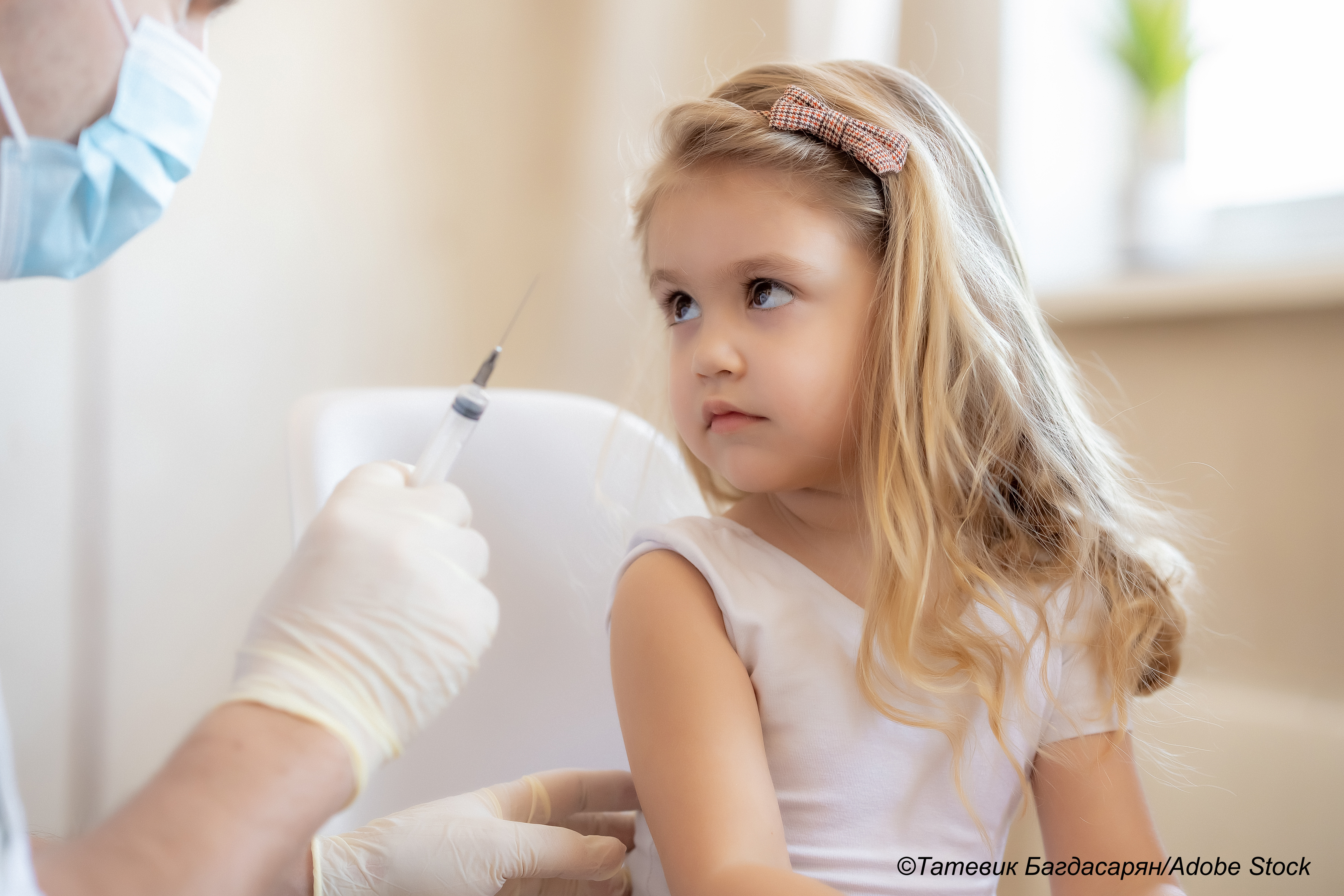
A cell-culture-derived influenza vaccine was 80.7% effective against influenza A/H1N1 in an international trial that tested the vaccine in children age 2 to 18, Terence Nolan, MB, BS, PhD, of the Murdoch Children’s Research Institute and the Peter Doherty Institute for Infection and Immunity, at the University of Melbourne, Melbourne, Australia, and colleagues reported in The New England Journal of Medicine.
The vaccine did not offer as robust protection against other influenza strains: “42.1% (95% CI, 20.3 to 57.9) against influenza A/H3N2, and 47.6% (95% CI, 31.4 to 60.0) against influenza B,” and the overall efficacy was 54.6% (95% CI 45.7-62.1),” Nolan and colleagues wrote, “and it achieved the benefit while providing the added advantage of “avoiding egg-adapted mutations.”
The multinational trial, which was conducted over three influenza seasons across different geographic regions (Australia, the Philippines, and Thailand in season 1; Estonia and Finland in season 2; and Estonia, Finland, Lithuania, Poland and Spain in season 3), enrolled 4,414 participants and randomized 2,258 to IIV4c and 2,255 to the control group.
Almost half (48.5%) of participants were female, half (50.7%) were age 2 to <9, and most participants (65.9%) had previously received a flu vaccine. One participant did not receive a trial vaccine. The participants were followed for a mean of 225 days. The final efficacy analysis included 2,219 who received IIV4c and 2,209 controls.
A total of 2,186 cases of influenza-like illness 14 days or longer after vaccination were reported by 1,576 participants. “Laboratory-confirmed influenza occurred in 175 of 2,257 participants who received IIV4c, for an incidence of 7.8% (range, 6.5-10.2 across three seasons), and in 364 of 2,252 participants who received the meningococcal ACWY vaccine, for an incidence of 16.2% (range, 15.2-17.4 across three seasons),” they wrote.
The vaccine tested was prepared from virus propagate in MDCK cells (IIV4c; Flucelvax Quadrivalent, Seqirus), which is known to be immunogenic with low toxicity in pediatric patients, but the clinical efficacy was not confirmed in a randomized controlled trial.
The primary endpoint was first laboratory confirmed influenza (any subtype) occurring 14 days or longer after vaccination to end of the flu season. Secondary endpoints were “serologic responses to vaccination that were measured by hemagglutination-inhibition assay and presented as geometric mean titers (GMT) at days 1 and 22 (for participants with previous influenza vaccination) or at days 1, 29, and 50 (for participants without previous influenza vaccination) for each of the four vaccine strains in serum samples collected. Safety and reactogenicity were assessed in terms of the percentage of participants with solicited and unsolicited adverse events, including serious adverse events, new-onset chronic diseases, medically attended adverse events within 30 days after the onset of influenza-like illness, and adverse events leading to withdrawal from the trial.”
IIV4c “contained 15 μg of hemagglutinin per 0.5-ml dose for each of the two influenza type A subtypes (H1N1 and H3N2) and each of the two influenza type B lineages (Yamagata and Victoria) as recommended by the World Health Organization for the 2017 Southern Hemisphere, 2017–2018 Northern Hemisphere, and 2018–2019 Northern Hemisphere influenza seasons,” they wrote.
The comparator was administered at a dose of 0.5 ml. All participants received a dose of a trial vaccine, but the youngest children randomized to IIV4c—age 2 to <9—who had not received a previous flu vaccine received a second 0.5-ml dose on day 29, while controls received a placebo injection on day 29.
“The efficacy of IIV4c was consistent—approximately 50%—during the three seasons in the trial. The unpredictable nature of seasonal influenza epidemics is a logistic challenge to reliably estimate the efficacy of new vaccines. Because circulating influenza types and subtypes varied over the seasons, without a single predominating subtype or strain, estimates of vaccine efficacy against each of the detected subtypes and types over the course of the trial were robust. Nevertheless, variability in vaccine efficacy against influenza A/H3N2 varied from 28.3% in season 3 to 46.2% in season 1 and 49.0% in season 2. Reasons for lower vaccine efficacy against influenza A/H3N2 may be partly explained by a higher mutation rate or reproductive number as well as greater glycosylation of hemagglutinin than with influenza A/H1N1, although vaccine and host factors probably also contribute.25 For egg-based vaccines, estimates of vaccine effectiveness against influenza A/H3N2 in children are lower than with the cell-based vaccine during the 2017–2018 Northern Hemisphere season of this trial,” Nolan and colleagues wrote.
However, they cautioned that since there was no influenza vaccine comparator, they could not estimate relative efficacy of IIV4c.
-
A multinational study confirmed efficacy of IIV4c cell-derived quadravalent influenza vaccine in children age 2 to 18.
-
Be aware that although the vaccine offered overall efficacy of more than 50%, it appeared to offer the greatest protection against the A/H1N1 strain.
Peggy Peck, Editor-in-Chief, BreakingMED™
The trial was funded by Seqirus.
Nolan reported grants from Seqirus, during the conduct of the study as well as grants and personal fees from Seqirus outside the submitted work, and personal fees from GSK, Merck, Sanofi Pasteur, AstraZeneca, and Moderna outside the submitted work.
Fortanier reported personal fees from Seqirus outside the submitted work.
Cat ID: 138
Topic ID: 85,138,730,190,31,138,139,44,192,561,653,924,925



Create Post
Twitter/X Preview
Logout